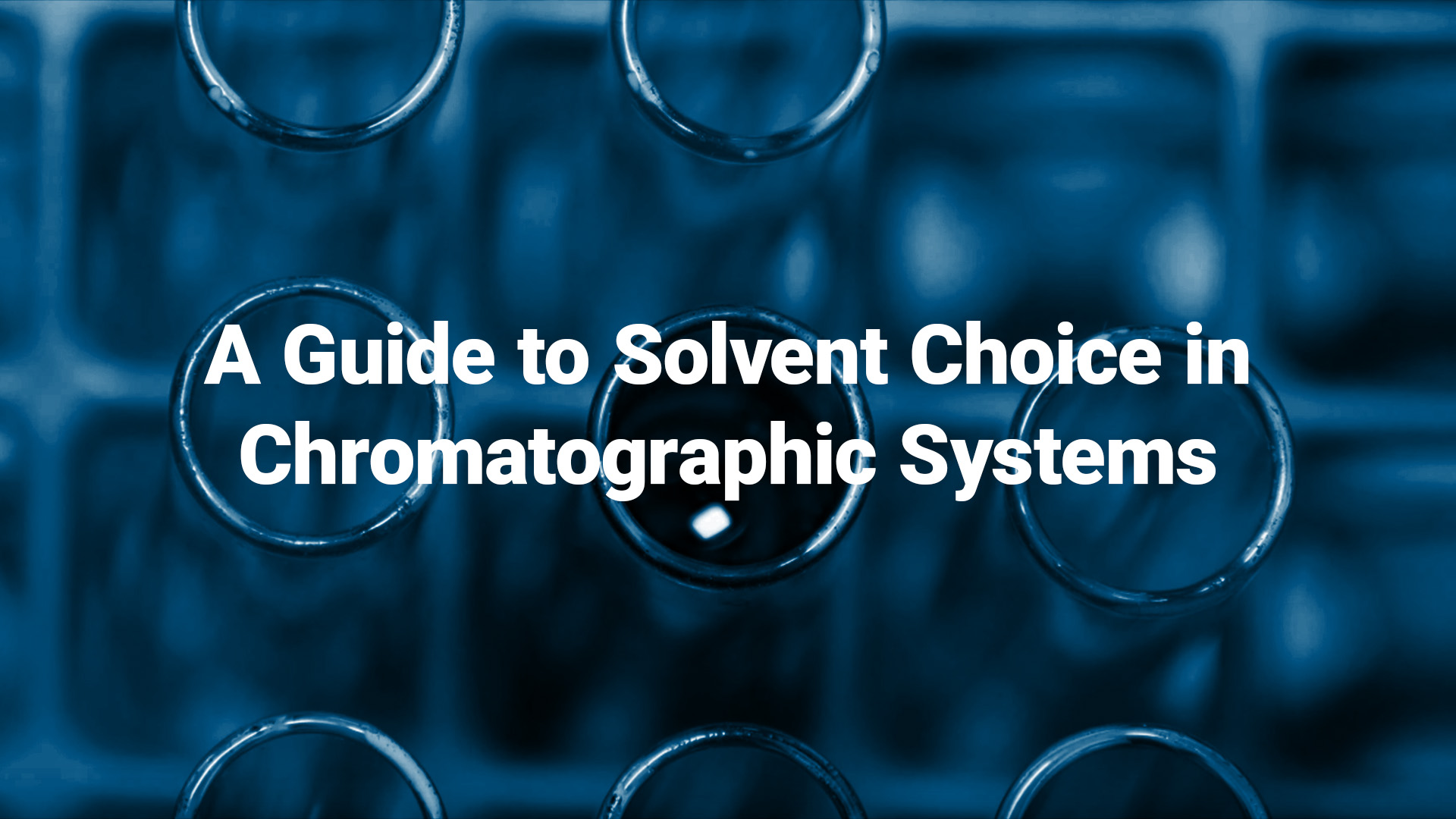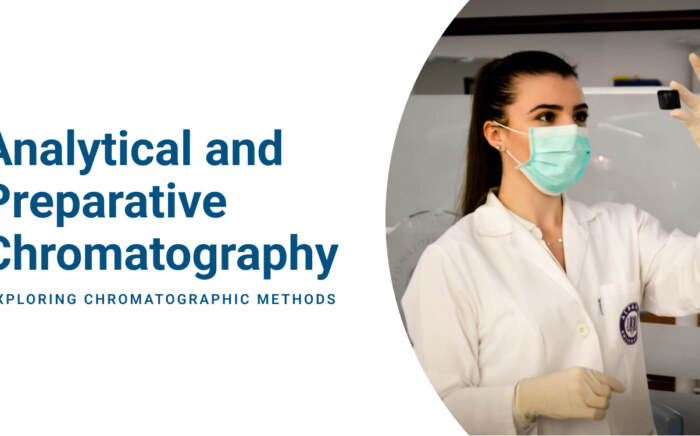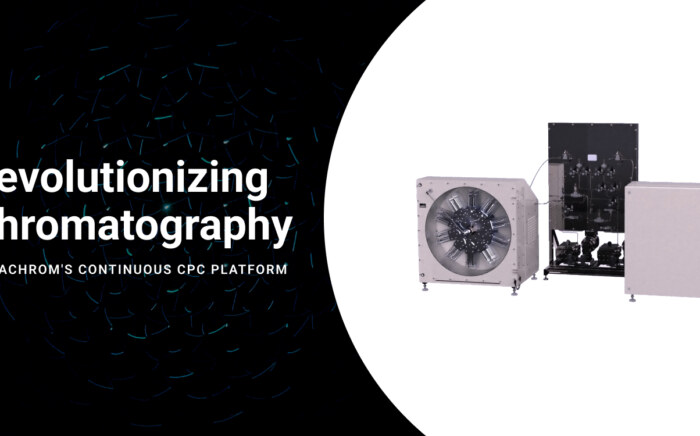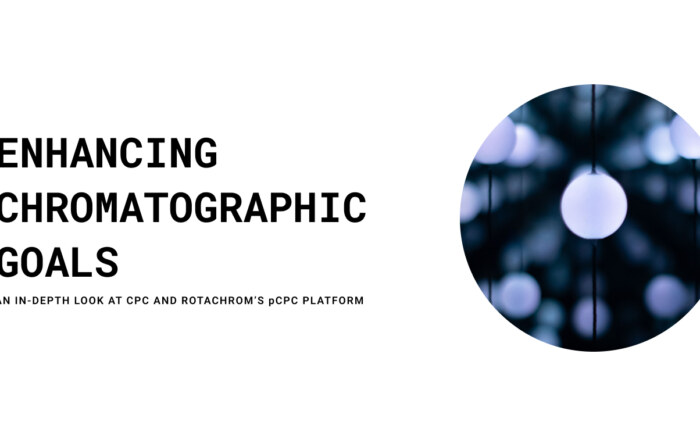Increasing separation efficiency by pH adjustment in Centrifugal Partition Chromatography
NewsPreparative-scale liquid chromatography, while widely used in the chemical industry for purification, encounters sustainability challenges due to substantial solvent consumption and the generation of solid waste from spent silica gel packing. This has spurred interest in alternative, sustainable purification methods. One such method gaining traction is hydrostatic countercurrent chromatography, often termed centrifugal partition chromatography (CPC). CPC not only presents a green alternative to traditional techniques but also offers a broader spectrum of available solvents, enhancing its versatility in various applications.
In this new blog post, we will delve into several aspects of chemical separation workflows that stand to benefit from CPC’s sustainable potential. To start, we will comprehensively explore how CPC functions and why traditional chromatography is deemed unsustainable. By comparing CPC with solid-based systems, we will shed light on how CPC enables environmentally friendlier separation processes, aligning with contemporary sustainability goals in the chemical industry. Stay tuned for in-depth insights into the sustainable future of chemical purification through CPC.
The Basics of CPC
Distinguishing itself from traditional solid-liquid chromatography, centrifugal partition chromatography (CPC) operates with liquid phases for both stationary and mobile components. The centrifugal force within the column immobilizes the liquid stationary phase while the mobile phase is actively pumped through. The process of partitioning solutes between these two liquid phases is pivotal, influencing purification by regulating the duration spent in the stationary phase, consequently impacting solute retention. This fundamental mechanism underscores the unique approach and effectiveness of CPC in chemical purification processes.
Centrifugal partition chromatography (CPC) offers compelling cost advantages by removing the need for purchasing silica gel and reducing solvent requirements. In traditional chromatography using solid silica-based packing gels, there’s a limitation in stationary phase options, and replacing saturated gel generates substantial waste, increasing costs and environmental impact. Conversely, CPC allows for a broader range of liquid-liquid systems as stationary phases within the same column, enhancing flexibility and efficiency in the separation process.
Furthermore, the shift to eco-friendly, renewable solvents in CPC aligns with sustainability goals and complies with evolving regulations that restrict hazardous solvents. By substituting environmentally harmful solvents with greener alternatives, CPC significantly diminishes the ecological footprint associated with chromatographic processes, making it a more sustainable choice. This emphasizes CPC’s potential to address both economic and environmental challenges in chemical separation workflows.
An Alternative to Solid-Based Systems
Selecting the appropriate biphasic system in centrifugal partition chromatography (CPC) can be a time-consuming task, given the wide polarity range that needs to be covered. To streamline this process, various regulatory bodies and researchers have provided guidance based on solvent properties like hazardousness, toxicity, and recyclability, aiding in efficient solvent system selection for specific applications.
How to Choose Your Solvents
For CPC, ideal solvents possess qualities such as low viscosity, UV transparency, a broad polarity range, and strong interfacial tension between aqueous and organic phases. Additionally, considering post-separation fraction processing, solvents with low boiling points are preferable.
- Several green solvents align with these ideal criteria, including:
- 2-Methyl-Tetrahydrofuran (2-Me-THF): A nontoxic, UV-transparent alternative to THF, exhibiting low miscibility in water and relatively high stability compared to other heterocycles.
- Limonene: An apolar solvent found in citrus fruits’ essential oils, with D-isomer being a major component.
- Cyclopentyl methyl ether (CPME): Capable of directly replacing dichloromethane (DCM) in the commonly used MeOH-DCM system.
- Water: A safe, environmentally friendly choice, especially for aqueous two-phase systems (ATPS) in green CPC applications, though ATPS can alter flow rates, affecting stationary phase retention and potentially complicating separation.
Another category of promising green compounds includes deep eutectic solvents (DES), particularly natural-origin components forming NaDES. DES, known for their significant freezing point depression (often above 150°C), are created by combining safe, renewable, and biodegradable components to form a eutectic mixture. With advancements in solute recovery and component recycling, NaDES could emerge as a compelling alternative to water-based solvent systems, providing a suitable polarity range for separating less polar and hydrophobic compounds.



